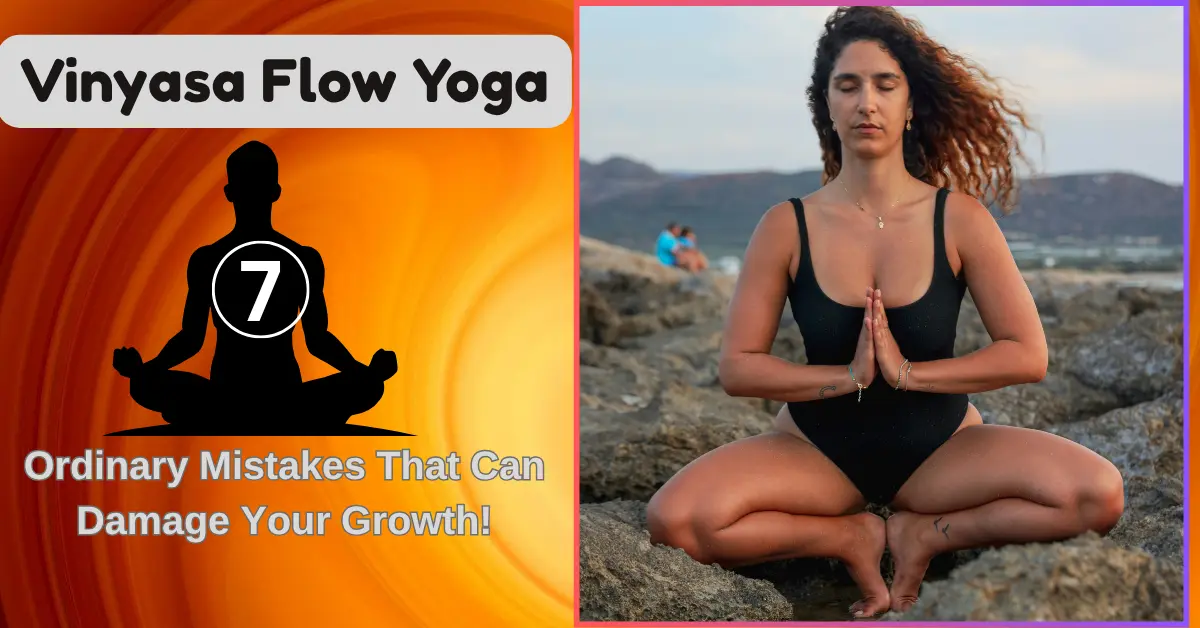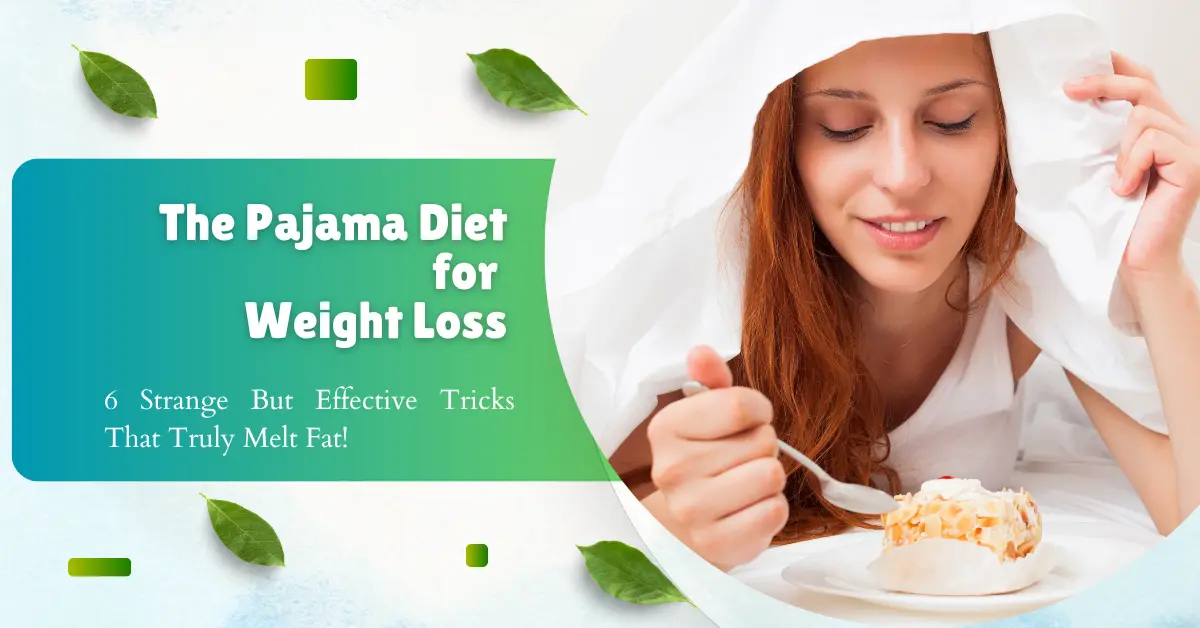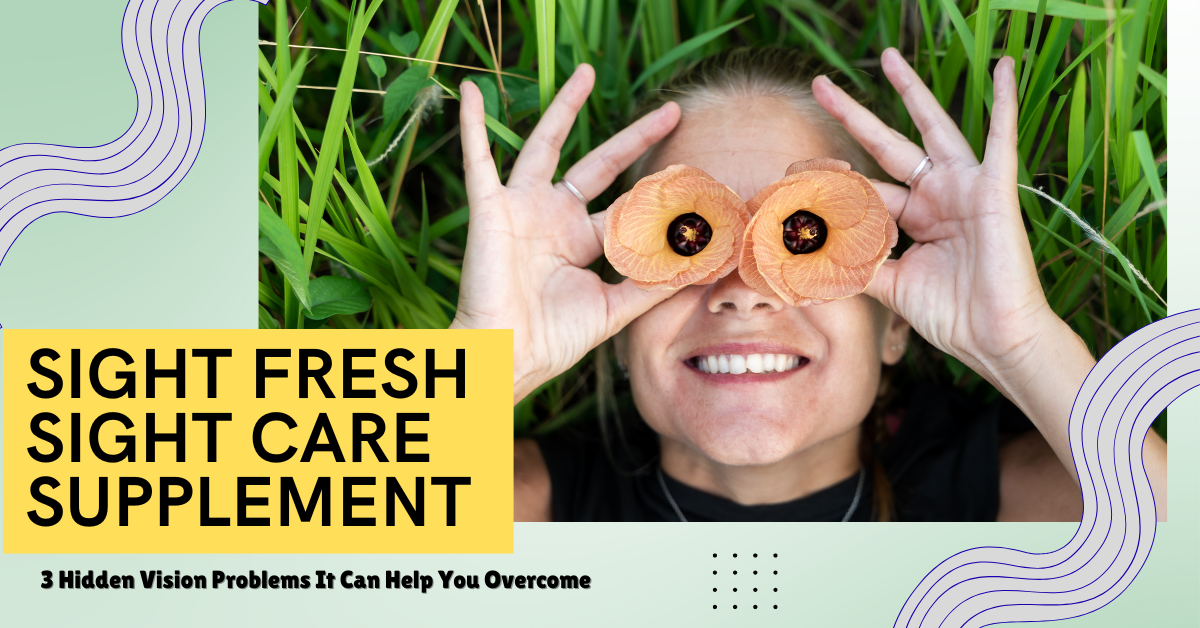Vinyasa Flow Yoga is an energizing and transformative style of yoga that connects breath with movement in a seamless way, through a flowing sequence of positions. It is often explained as a moving meditation that develops the connection between the body, mind, and soul. The word “Vinyasa” comes from Sanskrit, meaning “to bring peace in a particular way,” which highlights the intentional and thoughtful transitions between poses.
Flow with Freya – Vinyasa Flow Yoga for More Balance
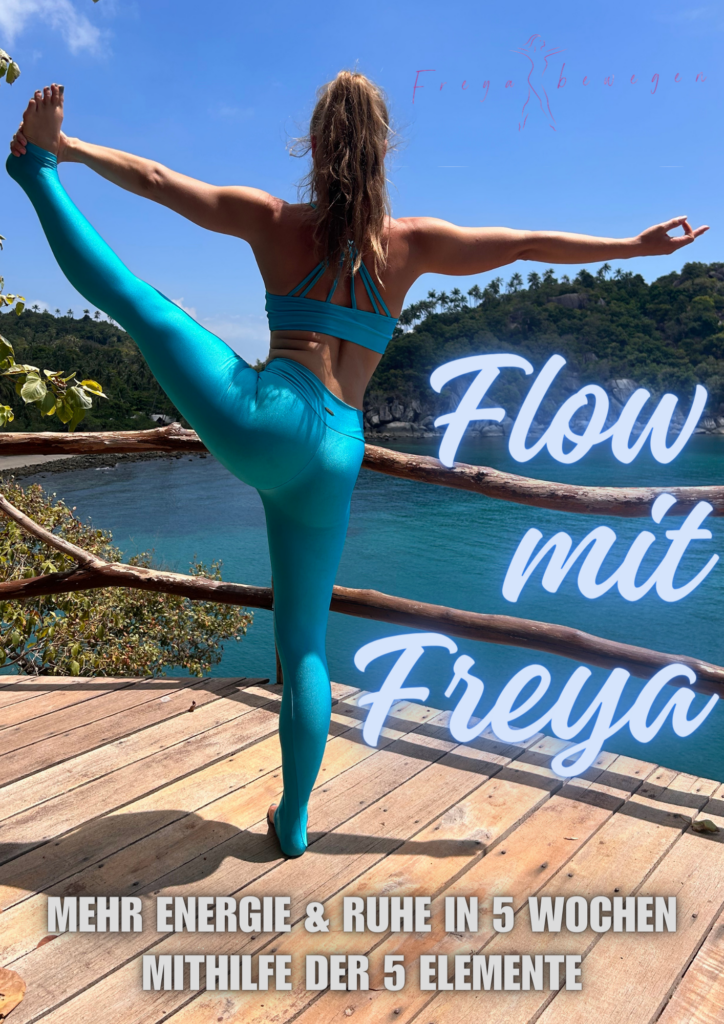
Relaxing Yin Yoga for more flexibility
- Practice the perfect blend of movement and calm with unique Vinyasa Flow Yoga to boost your balance and soothing Yin Yoga to enhance flexibility. Whether you are a beginner or at a transitional level, the extra instructional videos make every session easy to follow.
- Enjoy four new videos each week, plus bonus content on Ayurveda and mantra for a hidden, more universal practice.
- Change your living room into an oasis of calm. Open your body and discharge your blockages, and calm your mind with the power of the 5 elements!
- Awaken your body and mind in 5 weeks. You can transform your body and mind at your own pace from home!
Drawing from both Power Yoga and Kundalini Yoga traditions, Vinyasa Flow Yoga provides a balanced combination of physical power, flexibility, and mental attentiveness. Every session of Vinyasa flow yoga is distinctive, with a series that can be restful or vigorous, which makes it flexible for all levels of experts.
Although Vinyasa flow yoga is largely incorporated for its ability to enhance flexibility, boost stamina, and promote inner peace, several people have a vague understanding of what it involves and how it benefits overall well-being. Through this article, we will dive deeper into the principles, origins, and several health benefits of performing Vinyasa flow Yoga to explore why this style continues to hypnotize yogis all around the world.
What is Vinyasa Flow Yoga?
Vinyasa flow yoga is a type of yoga that combines breathing and movement, a rhythmic transition of breath, suitable for many subjects and all ages. In Vinyasa Flow Yoga, every unique order normally completes with calming and healing positions that allow the body and mind to capture the benefits of the exercise.
These relaxing positions offer a moment of calm, providing deep relaxation and reflection after the flowing movement. As you practice Vinyasa flow yoga, the constant relation between breath and movement develops a deep sense of unity between the body, mind, and soul. This practice not only boosts physical flexibility and balance but also grows cognitive clarity, emotional spirit, and inner strength. Vinyasa flow yoga is more than just an exercise; it is a complete journey that develops both the physical body and the power of the inner self.
In addition, the movements in Vinyasa flow yoga are often not too strict or have a certain framework. On the contrary, the movements will be combined into a series of movements, depending on each practitioner. Depending on the level of the practitioner, trainers can combine Vinyasa flow yoga postures from simple to advanced, such as sun salutations, warrior postures, balancing postures, or back bends,… logically and creatively to create a unique style for the practitioner.
What are the Special Features of Vinyasa Flow Yoga?
The special feature of Vinyasa flow yoga is that the following posture will follow the previous posture, creating a series of continuous and transitional movements. The movements will be transitioned and combined very gently and flexibly, and end with a resting posture, breathing gently and regularly.
What are the Levels of Vinyasa Flow Yoga
Typically, Vinyasa yoga courses will include 3 levels: basic, intermediate, and advanced. The difficulty of each level will depend on the flexibility of the postures as well as the combination of the movement series. Every level of Vinyasa flow yoga workout makes a powerful basis for developing to more advanced poses, allowing instructors to escalate quickly and safely. For beginners, it is completely typical to use useful tools such as yoga blocks, straps, or towels to help with placement and balance.
These props not only improve relief but also help prevent injury as you develop power and flexibility. To expand your vision and boost your technique, attending guided Vinyasa flow yoga classes can be remarkably useful. Under the guidance of a professional instructor, you can learn appropriate breathing, posture alignment, and sequencing, making a more improved and thoughtful yoga practice.
What are the Benefits of Practicing Vinyasa Flow Yoga
Vinyasa yoga brings many health benefits to the practitioner. If you practice Vinyasa yoga long enough, you will receive the following benefits:
Improves lung function
Vinyasa flow yoga is a remarkable practice for developing overall physical balance by boosting strength, flexibility, and swiftness pleasantly. The distinct flow of actions faces different muscle groups, supporting a balanced body shape. One of the key elements of Vinyasa flow yoga is the management of breath with each movement, which helps deeper, more precise breathing.
Over time, this calculated breath effort helps to improve the lungs’ ability and respiratory efficiency, allowing your lungs to work more efficiently. By joining physical movement with mindful breathing, Vinyasa flow yoga not only boosts your physical health but also backings a peaceful and focused mind.
Weight loss support
The movements in Vinyasa yoga are constantly changing and transitioning. This will keep your body moving continuously, helping to burn excess fat and lose weight very effectively.
Helps the body to remain Active and Flexible
With continuous and regular practice, Vinyasa flow yoga gradually tones your muscles and boosts flexibility. The flowing series works many muscle groups, helping to make strength while improving range of movement, consequently a slimmer, more balanced body shape.
Boost flexibility and decrease the risk of spinal injury
Nowadays, most of us have to work with high intensity and long hours at offices and factories, which makes the body less flexible and increases the risk of injury and spinal degeneration.
Vinyasa Flow Yoga involves meaningful, energy-based practices that engage and stimulate all the parts of the body. When performed continuously and with proper placement, it helps to improve balance, enhance flexibility, and strengthen the spine, eventually reducing the risk of injury while supporting overall physical health.
Helps To Improve Quality of Sleep
Performing Vinyasa flow yoga daily basis and properly will bring you a tranquil and calm spirit, thereby helping experts to remove stress and tiredness in life.
Not only that, exercise also helps improve sleep. When the mind is comfortable, sleep will come faster and, better quality, thereby giving the practitioner a body full of energy.
What are the Most Popular Vinyasa Yoga Poses?
As mentioned above, the sequence of exercises or Vinyasa yoga movements usually does not follow any specific principles. Instead, the movements depend on each coach. Each coach will personalize Vinyasa yoga into a logical and systematic exercise to guide the practitioner. Basically, Vinyasa yoga will focus on breathing like yoga flow; however, the movements are more decisive. Specifically as follows:
Kumbhakasana (Plank Pose) is the first pose in Vinyasa Flow Yoga looks like the top of a push-up position. It works as an intermediate pose in the flow sequence, supporting to creation of key strength, solidity, and endurance while grooming the body for more complex movements.
Ashtanga Namaskara (Knees_Chest-Chin Pose): It is a foundation posture often used in a Vinyasa flow yoga series. To perform it, exhale as you lower your knees to the mat, keeping your elbows close and pointing upward. With your hips raised somewhat off the floor, lightly lower your chest and chin to the ground, generating eight points of contact with the mat, hand, chest, chin, knees, and toes. This pose aids in building up upper body strength and prepares the body for deeper backbends.
Bhujangasana (Cobra Style): It is a mostly done backbend in Vinyasa Flow Yoga that aids in opening the chest and supporting the spine. To perform this pose, inhale as you press your palms into the floor, calmly lifting your chest upward. Keep your legs extended and toes pointed back, allowing your lower body to stay grounded while making an easy curve in the upper spine. This pose improves flexibility in the back area and helps with deeper breathing.
Adho Mukha Svanasana (Downward Dog Pose): It is a crucial pose in Vinyasa Flow Yoga that supports strength and flexibility. To perform it, exhale as you lift your hips towards the ceiling, creating an inverted V shape with your body. Keep your arms and legs straight, press your heels somewhat towards the floor, and direct your look toward your lower legs or feet. This pose stretches the spine, shoulders, and hamstrings while calming the mind, motivating the body.
Does Vinyasa Flow Yoga Have Some Side Effects?
While Vinyasa flow yoga offers many health benefits, it can also lead to side effects if performed without any proper guidance or in haste. Common issues may occur, such as musculoskeletal injuries like strains, sprains in the knees, back, shoulders, or wrists, specifically due to overexertion or poor alignment. Beginners can experience muscle pain, tiredness, or even faintness during quick changeovers. Moreover, individuals with previous injuries may experience a deterioration in their condition without proper adjustments. Momentary boosts in blood pressure and rare headaches have also been reported. Performing carefully, staying hydrated, and listening to your body are crucial to reducing these risks.
Final Words
Finally, Vinyasa Flow Yoga is an effective and transformative training that combines movements with breath, making a smooth and uninterrupted flow of poses. It not only strengthens the body and boosts flexibility but also helps to tranquilize the body and mind and reduces stress. Whether you are a beginner or a professional yogi, Vinyasa flow yoga provides unbroken changes compatible with your skill level and objective. Its unique natural mode makes it both activating and meditative, supporting a deeper association between the body, mind, and soul. Performing vinyasa flow yoga daily can lead to enhanced physical, emotional health and overall health.
Naked Yoga – Nude Yoga – Background, Practice and Examples
Information about “Yoga Without Clothes”.
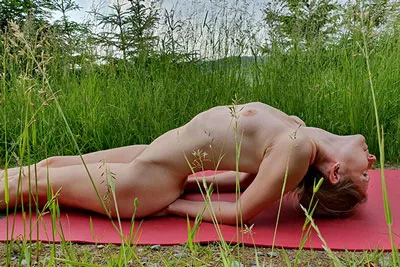
What is Naked Yoga?
Naked yoga is more than just practicing yoga without clothes
It’s far more than simply taking off your clothes in yoga. It’s the path to true freedom, genuine happiness, and deep self-love.
By taking off your clothes, you embark on a journey that can take you deep into your inner self. A journey at the end of which you will have become a completely new person. Free from prejudices and negative conditions that may have accompanied and hindered you throughout your entire life. Provided you are open and ready to rediscover something very essential within yourself.
But let’s start from the very beginning:
Yoga, as most people know it—clothed yoga— is a worldwide, steadily growing movement. In Germany alone, approximately 4 million people practice yoga regularly. According to a survey by the BDY, the professional association of yoga teachers, 86 percent of yoga practitioners notice a positive change in themselves. They feel physically fitter, calmer, more balanced, and more relaxed. Overall, they feel better. {Registered Now for Naked Yoga Classes}


